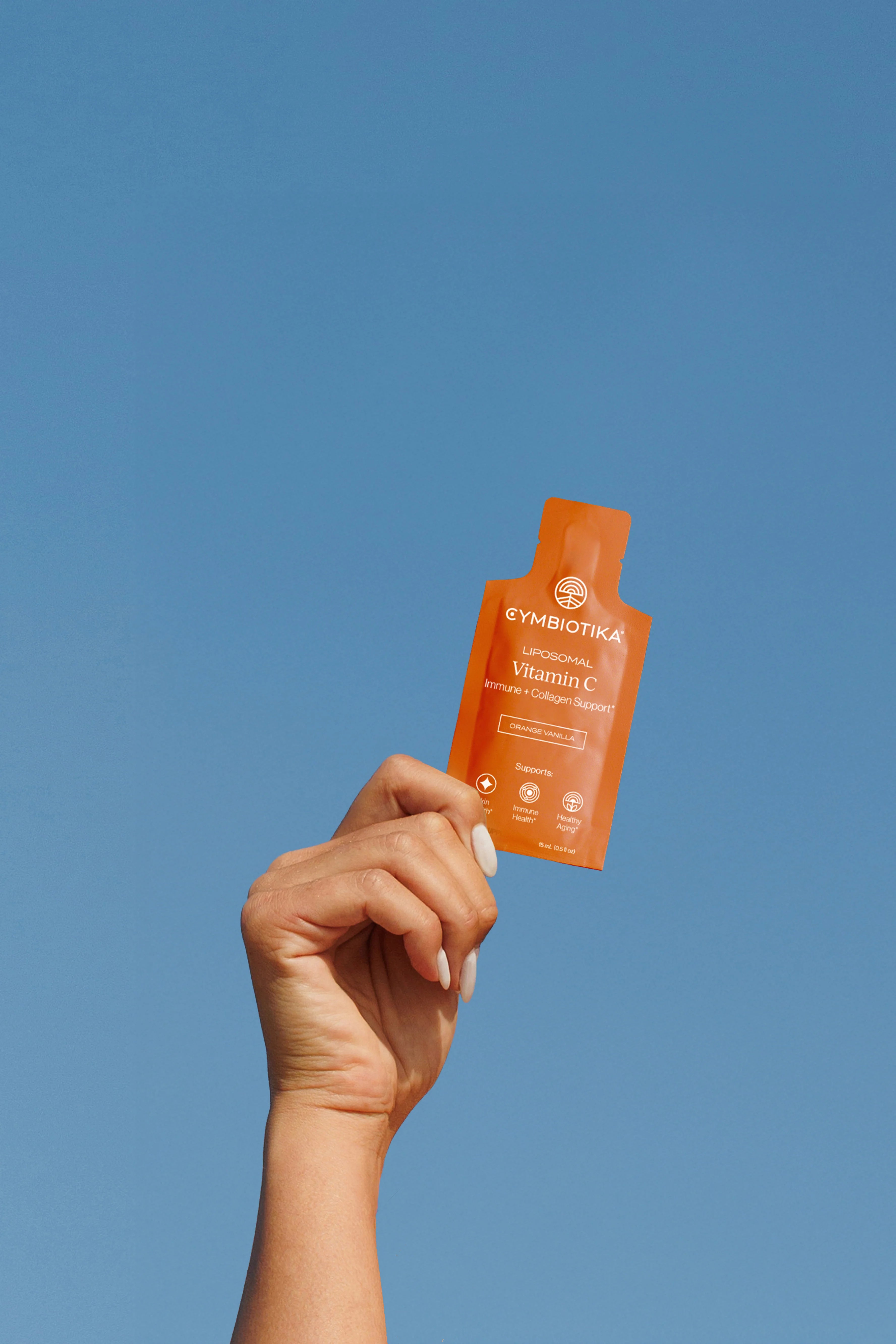
When we commit to regular exercise, we often reap its rewards in the form of increased muscle definition, improved stamina, or even reduced stress. But there are plenty of benefits for our hearts as well. Especially when you pair it with the best food for heart health.
Something as simple as a short walk outside or a bike ride through the park could offer the support that our hearts need in order to function optimally. Even if you’re not as active as you’d like to be right now, the good news is that it’s never too late to start incorporating heart health exercises (or just more physical activity) into your daily life.
If you could use a boost to help get you started, read on. We’re walking you through eight simple exercises that will support your heart health in more ways than you might expect.
1. Walking
It might seem almost too simple, but walking is a true testament to the way small habits are capable of inciting major change. Even going for a short stroll in the time it would take to watch a single episode of your favorite sitcom could bring a wide range of health benefits. Plus, it’s arguably one of the simplest ways to ease into an active lifestyle.
That said, there is a difference between a leisurely walk and one that’s a bit more brisk.
There’s no need to rev up your walking speed to Usain Bolt’s level, but raising your heart rate and building up a little sweat while you stroll around the block could contribute to a healthier heart.1
To be more specific, walking can improve your heart and overall health by:
- Improving cardiovascular fitness
- Maintaining a healthy body weight
- Improving muscle endurance
- Increasing energy levels
- Reducing the risk of heart disease and high blood pressure
To start tapping into this health-boosting potential, we recommend beginning with a 20-30 minute walk at least three times per week. That said, you should do what suits your personal needs best. If a 15-minute walk a few times a week seems more attainable, then start there. Then, you can work towards going a little further each week.
Throw on your favorite music playlist, listen to a podcast, or grab a friend or two to make it more enjoyable.
2. Hiking
Let's step up with more moderate exercise. Hiking has similar benefits to walking, but the difference in incline and terrain could increase your heart rate even more. Even a slow jaunt on a wooded trail could wake up muscle groups that have been lying dormant for some time. Plus, you may find it eases some of the stress and pressure that other activities, like running, can sometimes put on your joints.
When you’re first starting out, choose a route that you’re familiar with, and always wear proper footwear. Since the terrain often varies greatly compared to a flat path or sidewalk, watch out for loose rocks, tree roots, and other uneven surfaces.
If mountains are far more than a stone’s throw away from where you live, find a nearby hill in your neighborhood and climb it up and down. While high elevation may afford prettier panoramic views, there’s no need to tackle Everest-like heights in order to work up a solid sweat.
3. Cycling
Kick up the exercise intensity with cycling. Studies have shown that cycling for a few hours each week can lead to an improvement in overall health.2 The best part? It’s a very versatile form of exercise.
This low-impact exercise makes it easy to:
- Go for a ride in the park
- Commute to and from work
- Ride to the grocery store and back
The possibilities are almost endless—and you can make it as high- or low-intensity as you want.
Cycling allows you to be outdoors and adds extra adventure to your workout routine. Plus, since it’s predominantly an aerobic activity, you’ll be able to work everything from your heart, lungs, and blood vessels.2
Cycling regularly may bring a range of benefits for heart health, including:
- An increase in muscle flexibility and strength
- Improved cardiovascular fitness
- A decrease in body fat
- Prevention of heart disease
4. Skipping
When your heart pumps more blood efficiently, you can increase your stamina and boost your energy levels. Skipping is a fun—and often overlooked—way to achieve precisely that.
With aerobic exercises such as skipping or jumping rope, your body tissue pulls extra oxygen from your blood. This can lead to a faster metabolism and healthier levels of blood fats.3
Adding skipping to your exercise routine can boast the following benefits:3
- Lowering blood pressure and reducing the risk of high blood pressure
- Achieving or maintaining a healthy body weight
- Reducing the risk of coronary heart disease
- Limiting the possibility of blood clots, which can lead to heart attacks
5. Rowing
Interested in resistance training? Rowing can be a fun sport to learn. Rowing is one of those exercises that’s a full-body workout. It calls upon several muscle groups to get the job done—from biceps and triceps to abdominals and pectorals. Plus, as you may have already guessed, it’s another exciting exercise that can contribute to improved heart health.
Furthermore, since it’s a type of aerobic exercise, your cardiovascular system will naturally reap the rewards, with benefits extending to your lungs, blood vessels, and heart.
Whether you meet up with a friend for a gentle paddle in a canoe or work up a sweat on your at-home rowing machine, consider adding this activity to your list of heart-focused fitness options.
6. Swimming
As a low-impact, aerobic exercise, swimming is another activity you may want to make time for on your fitness calendar.
One of the primary benefits of swimming is that it helps to strengthen your heart. In fact, it can even enlarge your heart, enabling it to pump blood throughout your body with more efficiency. Plus, swimming puts your body’s range of motion to the test, ultimately aiding in joint and ligament flexibility.4
But swimming also comes with other heart-healthy benefits, such as:4
- Decreasing HDL cholesterol
- Reducing the risk of heart disease
- Keeping the cells that line your arteries flexible
7. Yoga
Yoga has long been synonymous with relaxation and calm. While that certainly holds true for many, it’s a workout with the potential to make a positive impact on your heart health, too. So, even if you’re looking to keep stress at bay after a taxing day, yoga can also help with:5
- Lowering blood glucose levels
- Lowering blood pressure
- Lowering blood cholesterol
- Lowering the heart rate
One particular study zeroed in on a group of participants who regularly experienced atrial fibrillation episodes, or irregular heart rhythms. The research here showed that those who took part in a yoga class twice per week saw the frequency of those episodes reduced.5
So, whether you’re rolling out your mat at home, in a studio, or a nearby park, you can feel good knowing that yoga will help to combat stress and boost your heart health.
8. Weightlifting
We get it—cardio and aerobic exercises might not be for everyone. So, if you’re an iron-pumping enthusiast, there’s good news for you, too. That’s because strength training has been shown to provide several advantages for heart health.
One of the primary benefits is that it could help to lower the risk of stroke and heart attack. With a consistent weightlifting routine, you increase your lean muscle mass, thus improving your circulatory pathways. 6Improved circulation, in turn, helps to distribute oxygen and essential nutrients to crucial organs that rely on this process to function properly.
If you plan to tackle heart health by way of weightlifting, here are some common exercises you can consider adding to your routine:
- Lat pulldowns
- Seated rows
- Squats and lunges
- Leg presses
- Bench press
The Importance of Eating Good Foods to Support Heart Health
Regular participation in heart-healthy exercises is just the first step toward making a positive lifestyle change, but it goes hand-in-hand with a well-balanced diet. Simply put, if your body isn’t able to get the proper vitamins and nutrients it requires, it may not be able to perform like you want or need it to.
Mixing healthy foods into your diet not only sets your body up for success in the athletic arena, but also helps to minimize the risks associated with high blood pressure, high cholesterol, and heart disease.
If you’re not already, try packing your dinner plate with a few of these heart-healthy foods:
- Avocado
- Oats
- Asparagus
- Leafy greens like kale, spinach, broccoli, and arugula
- Black beans
- Nuts, such as walnuts and almonds
- Fatty fish, such as tuna and salmon
- Strawberries, blueberries, raspberries, and blackberries
Regular consumption of these food items and supplementing Vitamin D3 K2 and Red Yeast Rice with CoQ10 can boost heart health by providing your body with essential nutrients like fiber, iron, potassium, magnesium, and vitamins B, K, and C.
Stay Active and Heart Healthy with Cymbiotika
Staying active regularly can lead to a healthier and more balanced lifestyle. With just a few weekly workouts, you could find yourself with more energy and enthusiasm to do your body the favor it deserves.
Plus, when you pair your exercise routine with a heart support supplement, it’s a recipe for success. Here at Cymbiotika, we make it easy to do just that.
Our Heart Health daily pouches are packed with good-for-you ingredients, like CoQ10 plus red yeast rice. If you don’t know what red yeast rice is, then you’re not taking proper care of your heart health. CoQ10 and red rice yeast benefits include: reduced oxidative stress, improved liver function, and balanced cholesterol levels.
Take a walk through the neighborhood on a warm day, explore local lakes and streams by kayak, and look to Cymbiotika to provide full-spectrum support as you take strides towards a more sustainable, heart-healthy lifestyle.
Sources:
- Mayo Clinic. Walking: Trim Your Waistline, Improve Your Health. https://www.mayoclinic.org/healthy-lifestyle/fitness/in-depth/walking/art-20046261
- Better Health Channel. Cycling - Health Benefits. https://www.betterhealth.vic.gov.au/health/healthyliving/cycling-health-benefits
- Skip-Hop. The Benefits of Skipping - a Healthy Heart. https://www.skip-hop.co.uk/skipping-benefits-a-healthy-heart/
- Swim Strong Foundation. Why is Swimming One of the Most Heart Healthy Exercises? https://www.swimstrongfoundation.org/why-is-swimming-one-of-the-most-heart-healthy-exercises-2/
- Hopkins Medicine. The Yoga-Heart Connection. https://www.hopkinsmedicine.org/health/wellness-and-prevention/the-yoga-heart-connection
- Select Health. Why Weightlifting is Good for Heart Health. https://selecthealth.org/blog/2019/02/why-weight-lifting-is-good-for-heart-health
- Healthline. 9 Benefits of a Rowing Machine. https://www.healthline.com/health/benefits-of-rowing-machine
























